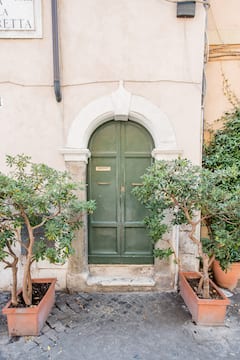Often times the Palatine Hill (Palatino) in Rome, Italy, may be overlooked by tourists because the Roman Forum (Foro Romano) is almost virtually located in the same archaeological area. However, this is definitely not a site you’re going to want to miss, as it is one of Rome’s famous seven hills. Wedged between Circus Maximus (Circo Massimo) and the Roman Forum (Foro Romano), let’s take a look at why this hill is so treasured today, and why you should not miss the chance to visit this area.
Where Romulus and Remus may have been found

According to Roman mythology, many believe that it was on Palatine Hill where the twins, Romulus and Remus were found by the four-legged she-wolf, who raised them, inside the Lupercal Cave. This is also the very same place where Romulus decided to build this powerful and enchanting city. Remus, Romulus’ brother, wanted to choose Aventine Hill as the founding location of Rome, however after violent disputes, Remus was later found dead, leaving Romulus the freedom to choose Palatine Hill to create the first legions and senate of the Roman Empire. In fact, it is said that Romulus named the city Roma (the Italian pronunciation of Rome), after himself.
The house of the first Roman emperor - Domus Augusti

During Rome’s Republic era, the Palatine Hill was a very fashionable place to live in. This is perhaps due to the incredible city views once you reach the top, which reaches a height of 40 meters (131 feet) above the Roman Forum. Several Roman Emperors built their homes here, and lived within the Domus Flavia (Flavian Palace). The house of Augustus (Octavian), known as Domus Augusti (House of Augustus), can still be viewed today and is not to be missed. This is one of the first major sites you’ll see as you make your way through Palatine Hill. By use of the ramps, you are allowed to visit this area to view the remains of the elegant frescoes that cover part of the walls and ceiling. You will also be able to see where guests were entertained, in the two smaller rooms, during their visit along with a larger room that was used exclusively by Augustus and remained private. In the study, you can see what’s left of the decorative images that still hold some of their color.
The House of Livia - Casa di Livia

Not only will you be able to see the Domus Augusti, but as you continue, you will see a beautiful 2-storey structure believed to be the Casa di Livia (House of Livia). Livia Drusilla, the first Empress of Rome, was also known as Julia Augusta and was the third wife to Augustus, and the mother of the second emperor, Tiberius (from her previous marriage). When she first met Augustus he instantly fell in love with her. So much so, that the day his previous wife (Scribonia) was giving birth to his only daughter, Julia, he divorced her right then to marry Livia instead; who at the time was 6 months pregnant with her second child. Even the Senate wanted to bestow upon her the title of Mater Patriae, which means “Mother of the Fatherland”. In short, Livia was an incredibly beautiful and formidable woman, one whose house you simply cannot miss the opportunity to view.
Once inside this first-century BC home, you will discover many well-preserved frescoes adorning the walls that still retain their bright and bold colors. One you’ll definitely want to take note of is featured in the tablinum (the central room featured in the photograph), also known as the “Room of Polyphemus”. This was the most richly decorated room throughout the whole house. Almost completely illegible now, you can still see the faintly visible remains of the fascinating mythological picture across the back wall that once displayed an earlier representation of the monster Polyphemus (who was immersed in water with Cupid riding on his shoulders) along with the sea nymph Galatea riding a sea-horse or hippocampus. Do not forget to frequently glance up to the ceiling as the frescoes and paintings do not stop at just the walls. Many of the ceilings were painted to resemble beautiful views as if you were peering through an open window.
You might be interested in these Airbnbs!
Admission fees and ticket information
The Palatine Hill opens as early as 8:30am and closes right before sunset, usually around 5pm. You can reach this location by taking Metro Line B to the Colosseo stop. I highly recommend to buy your tickets here first if you are also going to be touring the Colosseum (Colosseo) and the Roman Forum. Your ticket includes all of these sites, and is valid for 48 hours, however you will not run into as large of a crowd at the Palatine’s entrance as you would normally face if you were to purchase tickets at either the Colosseum or the Roman Forum. I also advise if you are not participating in a tour group, to avoid arriving first thing in the morning, as this is when the majority of the groups will be arriving. The price for your ticket, that is also valid for the Colosseum and the Roman Forum is 11 EUR (12.43 USD), and there is a reduced fee for European Union citizens aged 18 to 25 that is only 7.50 EUR (8.48 USD). Please take note that the House of Augustus and Livia will both be open to the public until June 30th 2016, and because of this, you don’t want to miss out on this precious opportunity to peer into the past.
History
Get Trip101 in your inbox
Unsubscribe in one click. See our Privacy Policy for more information on how we use your data




















Create an account to